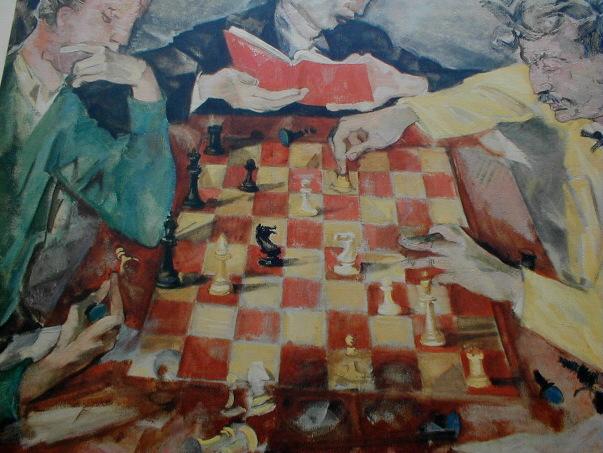Chapter 5 - Focal-Points
This chapter deals with the troubles a defenders has in protecting a castled position especially one whose pawns in front of the king are poorly placed.
V. has very specific language which I find confusing:
The final resting point of the mated king is the mating square.
The square from which the attackers threatens or delivers mate from is the mating focal-point .
The square and attacker harries the King from or uses it to break into the pawn structure is the strategic or auxilary focal-point.
If there are many squares both auxilary and mating focal points of the same color there is a network of weak squares .
Generally speaking every focal-point is a weak square for the defensive side and a potential strong square for the attacker .
This chapter discusses attacks against various focal-points: The focal-point g7,the focal-point h7,the auxilary focal-point f7, complex focal-points.
This,my friends, is the start of the deep stuff.............
The Subtle differences between the focal-point on g7 versus the focal-point on h7
The h7 fp is more frequent due to the d3 being a natural square to post whites bishop and the ease of getting the knight to g5 compared to f5 or h5.
However attacks on g7 are more deadly as the queen can mate on g7 easier due to the kings possible escape square on f8 (with h7).
Also a weakness on h7 brings with it a weakness on only one other square g6 while a weakness on g7 brings with it a weakness on f6 and h6.
Playing g6 provides a greater weakening than h6. However the pawn on h7 is harder to defend since g7 can be defended by a bishop on either f6 or f8.
V. has very specific language which I find confusing:
The final resting point of the mated king is the mating square.
The square from which the attackers threatens or delivers mate from is the mating focal-point .
The square and attacker harries the King from or uses it to break into the pawn structure is the strategic or auxilary focal-point.
If there are many squares both auxilary and mating focal points of the same color there is a network of weak squares .
Generally speaking every focal-point is a weak square for the defensive side and a potential strong square for the attacker .
This chapter discusses attacks against various focal-points: The focal-point g7,the focal-point h7,the auxilary focal-point f7, complex focal-points.
This,my friends, is the start of the deep stuff.............
The Subtle differences between the focal-point on g7 versus the focal-point on h7
The h7 fp is more frequent due to the d3 being a natural square to post whites bishop and the ease of getting the knight to g5 compared to f5 or h5.
However attacks on g7 are more deadly as the queen can mate on g7 easier due to the kings possible escape square on f8 (with h7).
Also a weakness on h7 brings with it a weakness on only one other square g6 while a weakness on g7 brings with it a weakness on f6 and h6.
Playing g6 provides a greater weakening than h6. However the pawn on h7 is harder to defend since g7 can be defended by a bishop on either f6 or f8.


0 Comments:
Post a Comment
<< Home